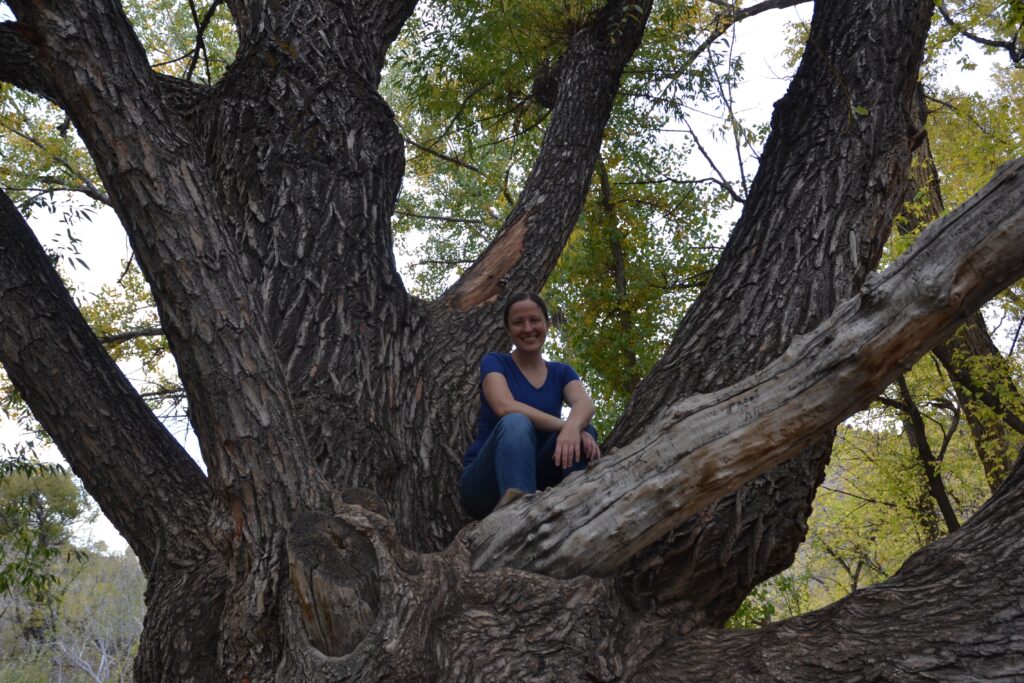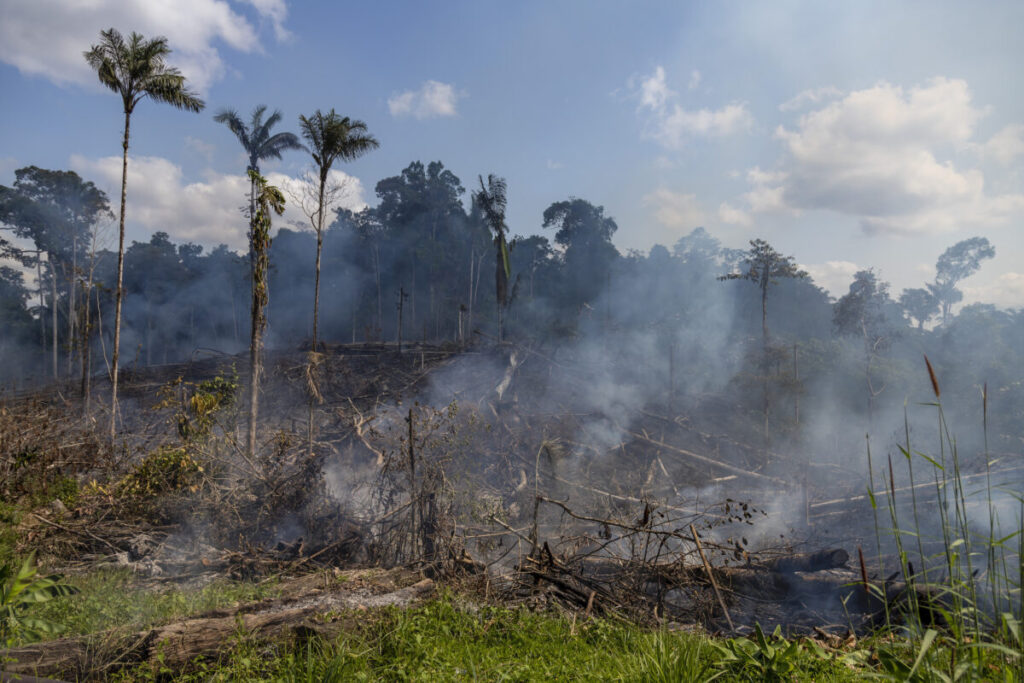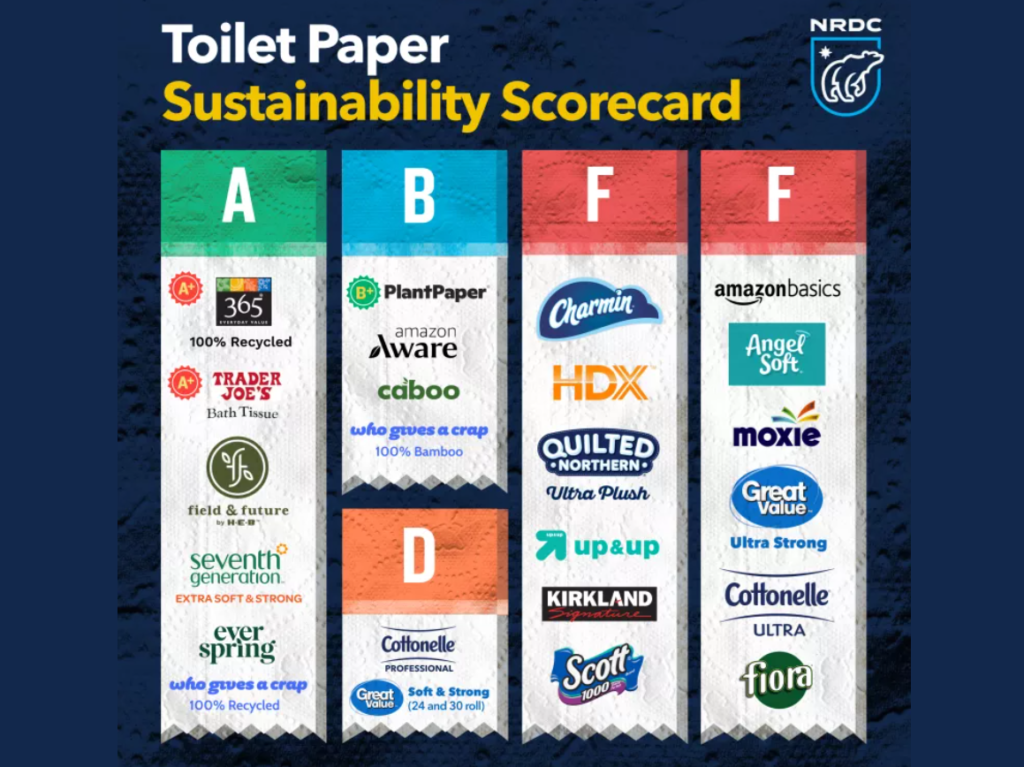I’m not quite sure how it happened, but this post marks the fifth anniversary of the Radical Moderate blog. When I started this adventure five years ago, it was because several friends encouraged me to share things I was learning about sustainability with a broader audience. I certainly never expected it to last this long, even though I still learn new things every day through my work, my hobbies, and my interactions with others. So, whether you’ve been following along from the start or starting off with this post, I thank you for being here on this incredible adventure with me.
And since we’re celebrating the fifth anniversary of my very first post, [1] we’ll be looking at the traditional fifth anniversary gift, which is wood. And that, dear reader, makes me very happy because it means diving into the topic that probably got me into sustainability in the first place: trees, forests, and deforestation. I just finished up a series about ‘90s nostalgia, [2] and that trip down memory lane acknowledged how strong a role the ‘90s environmental movement played in my personal development, beginning with an awareness of how vital trees are to this planet and what we can do to protect them.
Early Influences
I remember watching a video about deforestation when I was in elementary school that listed a statistic about how many acres of rainforest were being destroyed every minute. I don’t remember the statistic quoted, but based on a New York Times article from 1990, it was probably in the ballpark of 90 acres. [3] Since it’s Superbowl Sunday, that’s worth noting that’s about 68 football fields (including end zones) gone every minute of every day.

That rate of devastation has fluctuated over the years, [4], [5] but at that time, we were starting to connect concepts like the loss of trees with the increase of carbon dioxide in the atmosphere, and the greenhouse gas effect with global temperature rise. The reason for urgency was clear, and level of urgency in that video stayed with me, but I don’t remember any actual concrete steps shared with us that we, as elementary school students, could take to make a difference.
Fast forward to college, and I had the opportunity to travel to Ecuador for an intensive one-month study abroad program. The class was actually for anthropology, but since we were each allowed to choose our own topics of study on the ground, I picked deforestation. My topic was certainly more in the realm of environmental science, but I was able to tie it back to relevant impacts in the communities we visited. One of the most notable lessons from my trip was understanding how financial pressure can impact decision making.
During that trip, I learned that those who owned wooded land had the ability to sell lumber to meet market demand. Some chose to practice sustainable harvesting, cutting only select trees and leaving the rest intact for the time being, even though that represented a smaller, if more long-term, revenue stream. Some would clear-cut their land, selling all of the lumber at once and capitalizing on a lump-sum, but that option limited future income until something else could be done with the land. Some would sell the land itself, resulting in a (relatively) huge influx of money, which may have been sorely needed, but then the land – and the opportunities that came with it for future revenue – were gone.
Broader Impacts
Sitting in our classroom the semester before the trip, it was easy to criticize decisions that I didn’t agree with, but it was a little harder once I landed in South America and started hearing about all the factors that played into the decisions that people had to make. And it was at that point I realized that these people who were selling their lumber – sometimes selling their land to lumber companies – were meeting a demand… a demand created elsewhere, much of it in my home country. That trip opened my eyes to the fact that my decisions (especially my purchasing decisions) had ripples across the globe.

Image credit: [6]
Fast forward again to today, and deforestation is absolutely still an issue, particularly in the Amazon. [7] The biggest driver(s) of clearing rainforest are represented by the need for land to raise beef cattle and land to grow soybeans, 70-75% of which is used to feed livestock, including cattle. [8] According to GlobalAgriculture.org, “Nearly 60% of the world’s agricultural land is used for beef production, yet beef accounts for less than 2% of the calories that are consumed throughout the world.” [9]
When discussing reasons why deforestation is a bad thing, the list usually starts with plants’ critical role in removing carbon dioxide from the atmosphere through photosynthesis. But I recently learned about a different plant process called respiration, which works in the opposite way, releasing carbon dioxide. [10] While the process of respiration is a natural one, we count on photosynthesis to remove carbon dioxide from the air, in part to help limit the increase of global temperatures. However, some studies have shown that increasing temperatures can also reduce the amount of photosynthesis and/or increase the amount of respiration performed by trees.
What that means is that as rainforests are depleted and as temperatures continue to rise, [11] not only are we relying fewer trees to sequester the carbon contributing to temperature increases, we’re also seeing trees that may be less capable of performing that function in the first place, [12] which means we’d be looking at a feedback loop in which we are less and less resilient to the effects of climate change.
What to Do
When writing these posts, I like to share something that can be done to address a problem that I pose, if that is possible. When researching this blog post and trying to better understand what we can do differently, I encountered some broad-stroke statements about how deforestation needs to stop, but much akin to that first rainforest video I watched in elementary school, information on individual action was less forthcoming. There are some efforts on the ground in various countries to preserve existing forest and to replant areas that have been lost, and to that end, it is valuable to support organizations that are doing work on that front. [13]

Image credit: [14]
But we as consumers make individual decisions all the time, as I realized when I was in Ecuador in college. Whether or not we buy wood products on a regular basis, when we do, we can make sure it’s sourced ethically. The Forest Stewardship Council works with businesses, environmental interest groups, and communities to support more sustainable management of forests, including through a certification process for sustainably sourced wood. [15] Other products made from wood might fly under the radar, but I’ve written in the past about how old-growth forest is frequently used to make such mundane products as toilet paper. [16] Natural Resources Defense Council has created a toilet paper scorecard, and there are certain toilet paper brands that wear their environmental conservation as a badge of honor, such as Who Gives a Crap, [17] which is, coincidentally, what we use in our house.
But I would be remiss without coming back to the biggest drivers of deforestation, mentioned above. Worldwide beef consumption is projected to rise in the coming years, which will necessitate more land for cattle and the food that they have to consume. [18] Eating less beef is one of the best things you can do for the environment, not only because of the sheer amount of greenhouse gases created in the raising of cows, but also because of the impacts of land use change, which often involve clearing trees to create pastures. Anything we can do to curb the growth of the beef market will benefit the environment in multiple ways.
~
Deforestation is a persistent problem with a lot of factors that contribute to it, and I know better than to try to dictate a simple solution to solve a complex issue. That said, I am also aware that examining the different levers that contribute to a system that isn’t working can help to dismantle or transform it. And that’s one of the things I am continuing to do on this blog.
And I thank you for being here for it.
[1] https://radicalmoderate.online/new-recycling-guidelines-in-the-south-hills/
[2] https://radicalmoderate.online/the-30-year-nostalgia-cycle/
[3] https://timesmachine.nytimes.com/timesmachine/1990/06/08/811290.html?pageNumber=1
[4] https://www.scientificamerican.com/article/earth-talks-daily-destruction/
[5] https://www.fao.org/state-of-forests/en/
[7] https://www.fao.org/state-of-forests/en/
[9] https://www.globalagriculture.org/report-topics/meat-and-animal-feed.html
[10] https://orise.orau.gov/resources/k12/documents/lesson-plans/intro-to-photosynthesis.pdf
[11] https://www.epa.gov/climate-indicators/climate-change-indicators-us-and-global-temperature
[12] https://nph.onlinelibrary.wiley.com/doi/full/10.1111/nph.17951
[13] https://www.nationalgeographic.com/environment/article/deforestation
[14] https://www.nrdc.org/resources/issue-tissue
[15] https://fsc.org/en
[16] https://radicalmoderate.online/bidet-vs-toilet-paper/
[17] https://us.whogivesacrap.org/
1 Comment
Robert (Alaric) · February 11, 2024 at 5:56 pm
Thank you for continuing to write these interesting articles. I am enjoying reading them.